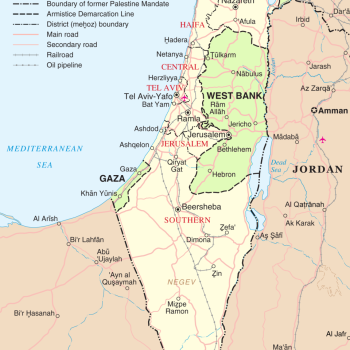My Monday night teacher, who belongs to my parish, starts each class by asking us to bow our heads and think about the "intention" we have for our practice. How beautiful and perfectly complementary to the intercessory prayer we practice as Christians. She always ends the class by saying: "Shanti (peace), shanti, shanti. Peace in our hearts, peace in our homes, peace on our planet." Yoga is about peace.
Finally, every yoga class ends the same way, with hands held in prayer position over the heart as we bow slightly to each other and say, "Namaste," which means, "the divinity (or light) in me bows to the divinity in you," not so dissimilar to the way Benedictine monastics have always bowed to "the Christ in each other" as they process in and out of choir. Having grown up believing that my body is a temple of the Holy Spirit, this practice echoes my own Catholic beliefs. In fact, I should take that posture and attitude toward more people in my life, not just those on the mat next door. Yoga is about recognizing the presence of God, in ourselves and in the world around us.
I think a lot of fear and confusion stem from the unknown. People don't know what to make of the strange Sanskrit words, the poses with animal names, the chanting. There is a sense that if you do yoga, you must be exploring Hinduism or at the very least looking for something outside Jesus Christ. But nothing could be further from the truth for faithful Christians who use Eastern traditions to strengthen our prayer lives.
Many traditional Catholic devotions don't work for me. I'm really not that good at saying the Rosary. I struggle with the Liturgy of the Hours, even though I continue to pray it as often as possible. But the physicality of yoga as a way to enter into meditation? That feels as natural to me as breathing. And as I breathe in and out and bring my body to a point of stillness, I can feel myself inching closer to God, pose by pose.




